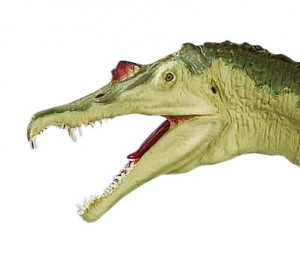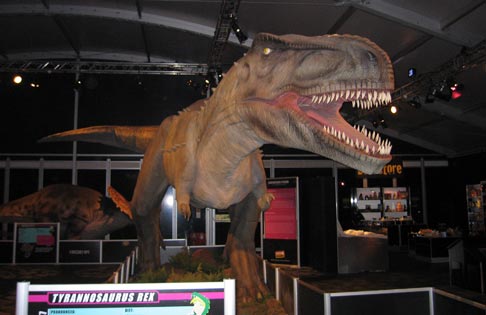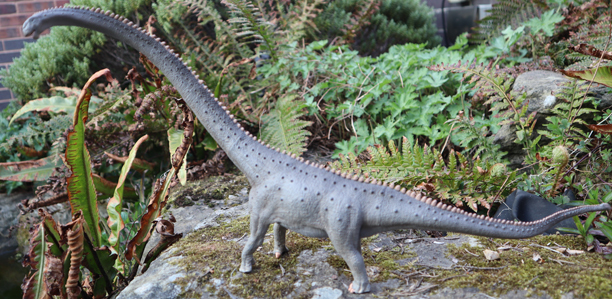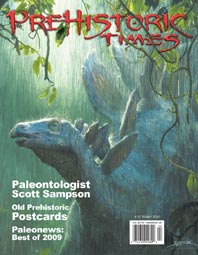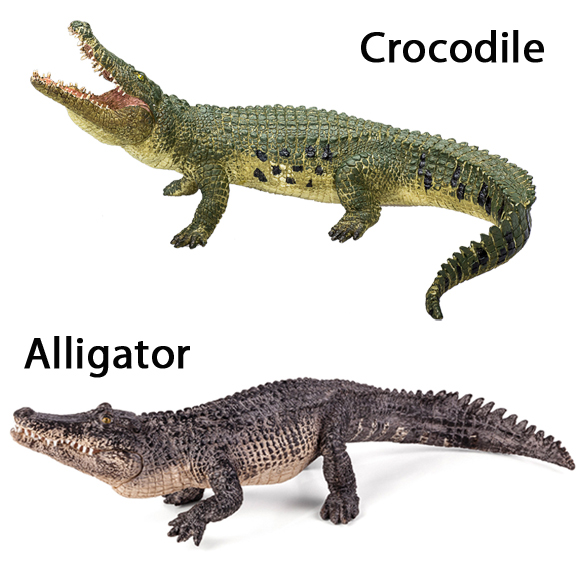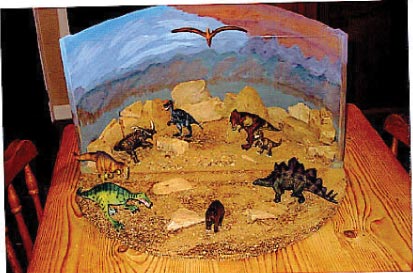The New Carnegie Collection Spinosaurus
Carnegie Collection Spinosaurus
Everything Dinosaur continues to work closely with Safari Ltd of the United States and just in is the Spinosaurus model, part of the Carnegie Collectibles range of models. This finely detailed 1:70 scale model of Spinosaurus aegyptiacus stands 12 cm high at the hips and has an overall length of approximately 38 cm. It is a more gracile representation of this member of the Spinosauridae compared to the model produced by Schleich. There are a number of differences between the two interpretations of this large theropod. Team members at Everything Dinosaur have been asked to write a review of these two prehistoric animal models for an ezine and this will be done in the near future.
Carnegie Collection Spinosaurus
Carnegie Spinosaurus
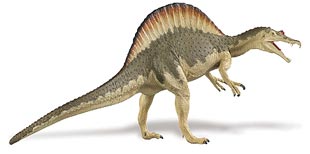
Picture credit: Everything Dinosaur
This model is beautifully painted and continues the marked improvements being made by Safari in their interpretation of prehistoric animal fossils. The most significant feature of the skeleton of Spinosaurus is the array of spines that run along the backbone. In life, this would have been covered in skin and formed a sail-like structure. The exact purpose of this is unknown, although it may have played a role in regulating body temperature or it could have been an elaborate signalling device. Spinosaurus is usually depicted as a solitary hunter, perhaps a colourful sail-like structure was used to help communicate between individuals when they met.
To view the model of Spinosaurus and other prehistoric animals in the Wild Safari Prehistoric World range: Safari Ltd. Wild Safari Prehistoric World.
The detail shown on this particular model is excellent, even down to the pronounced kink in the upper jaw, a characteristic of the spinosaurids. The snout is shown to be very narrow and in combination with the kinked upper jaw it is thought these are adaptations for catching fish. Spinosaurus is believed to have been a specialised piscivore, however, such a large theropod, (some estimates give it a length of around sixty feet), would be capable of predating upon herbivorous dinosaurs that shared its north African habitat.
The Fine Detail of the Model
Picture credit: Everything Dinosaur
The close up clearly shows the accurate detailing of the teeth and jaws, plus a small crest on the centre of the snout above the nostrils. The nostrils are located in a position to permit the jaws to be dipped in water without them going under the water too, this is a useful adaptation for a fish eater. Incidentally, such an arrangement would permit this large dinosaur to scavenge the bodies of dead animals. The narrow jaws permitting easy access to the body cavity of carcases. It is likely that spinosaurids filled out their fish diet with some scavenging on carrion.


